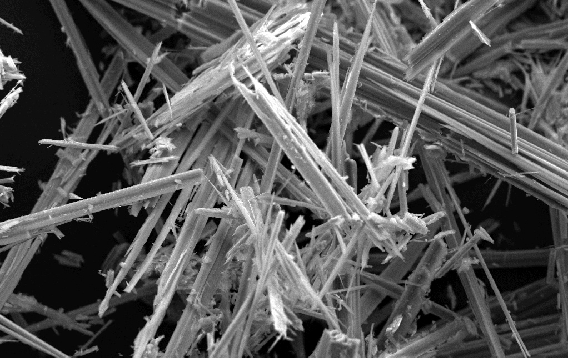Researchers Find More Efficient Way to Detect Asbestos
Research & Clinical TrialsWritten by Travis Rodgers | Edited by Amy Edel

Researchers at the National Institute of Standards and Technology say they have come up with a new more convenient and cheaper process to detect the presence of toxic asbestos. In the past, the only accurate way to find asbestos was through a laboratory procedure known as transmission electron microscopy, but researchers found scanning electron microscopy is comparable.
This new method has the potential to expedite the process and lower the cost of asbestos abatement nationwide. Currently the total average cost to remove asbestos is $3 billion a year in the U.S.
Both asbestos detection methods involve technicians focusing electron beams onto a microscopic amount of material. During the more traditional TEM method, electrons pass through the sample material. With the SEM method the electrons are reflected off the surface.
This means TEM typically produces more detailed images of the material. However, recently SEM technology has improved. Many companies are now able to offer the technology on a laptop allowing the process to be done outside of a lab and in the field.
The entire SEM process can also be completed in several months compared to years with TEM. Other possible advantages of SEM that researchers tout are more relaxed training requirements for operators, lower cost equipment and a greater field of view compared to TEM.
“There are some capabilities TEM has which SEM doesn’t,” NIST researcher Jason Holm said. “But we think SEM is good enough” for use in asbestos abatement.
Asbestos Abatement and Health Risks
Asbestos abatement should be left to professionals who follow strict regulations and use proper equipment to help ensure safe removal of the toxic material. Disturbing asbestos products is dangerous because they can break and release microscopic asbestos fibers that can cause a number of asbestos-related diseases.
Asbestos exposure is the primary cause of mesothelioma. The rare and aggressive cancer can develop in the lining of the lungs, abdomen, heart or testes and spread throughout the body.
Companies used asbestos for decades in many products including:
- Adhesives
- Cement sheets
- Consumer products
- Insulation
- Popcorn ceilings
- Textiles
- Vinyl flooring and wallpaper
The naturally occurring mineral was used in many items because of its resistance to heat, corrosion and electricity. It was also widely used in buildings in the military and on U.S. Navy ships.







